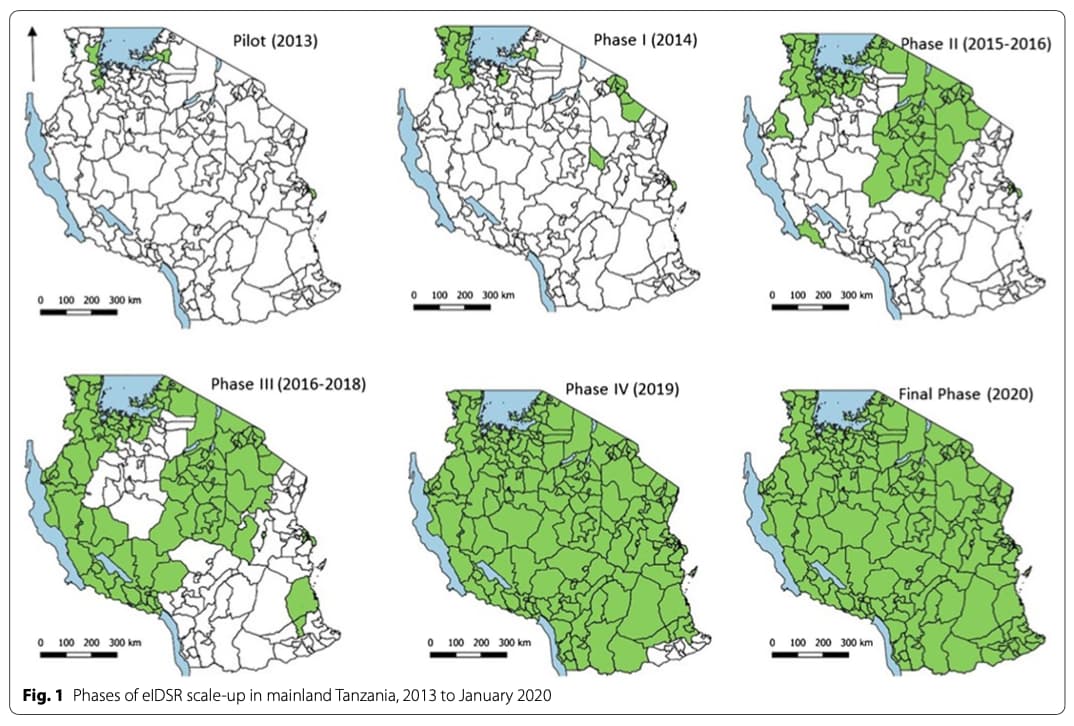Tanzania has made remarkable progress in reducing malaria burden and aims to transition from malaria control to sub-national elimination.In 2013, electronic weekly and monthly reporting platforms using the District Health Information System 2 DHIS2 were introduced.
Weekly reporting was implemented through the mobile phone-based Integrated Disease Surveillance and Response (eIDSR) platform and progressively scaled-up from 67 to 7471 (100%) public and private health facilities between 2013 and 2020.This study describes the roll-out and large-scale implementation of eIDSR and compares the consistency between weekly eIDSR and monthly DHIS2 malaria indicator data reporting, including an assessment of its usefulness for malaria outbreak detection and case-based surveillance (CBS) in low transmission areas.
The indicators included in the analysis were number of patients tested for malaria, number of confirmed malaria cases, and clinical cases (treated presumptively for malaria). The analysis described the time trends of reporting, testing, test positivity, and malaria cases between 2013 and 2021. For both weekly eIDSR and monthly DHIS2 data, comparisons of annual reporting completeness, malaria cases and annualized incidence were performed for 2020 and 2021; additionally, comparisons were stratified by malaria epidemiological strata (parasite prevalence: very low < 1%, low 1 ≤ 5%, moderate 5 ≤ 30%, and high > 30%).
Weekly eIDSR reporting completeness steadily improved over time, with completeness being 90.2% in 2020 and 93.9% in 2021; conversely, monthly DHIS2 reporting completeness was 98.9% and 98.7% in 2020 and 2021, respectively. Weekly eIDSR reporting completeness and timeliness were highest in the very low epidemiological stratum. Annualized malaria incidence as reported by weekly eIDSR was 17.5% and 12.4% lower than reported by monthly DHIS2 in 2020 and 2021; for both 2020 and 2021, annualized incidence was similar across weekly and monthly data in the very low stratum.
The concurrence of annualized weekly eIDSR and monthly DHIS2 reporting completeness, malaria cases and incidence in very low strata suggests that eIDSR could be useful tool for early outbreak detection, and the eIDSR platform could reliably be expanded by adding more indicators and modules for CBS in the very low epidemiological stratum.
Read More
